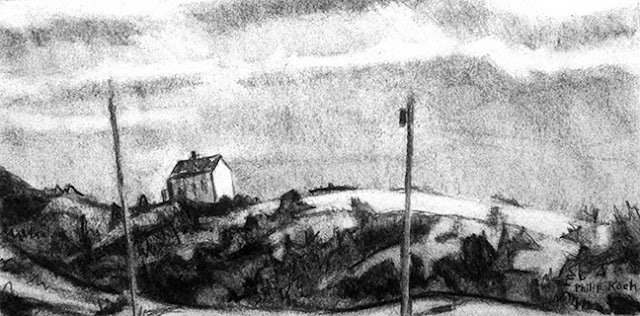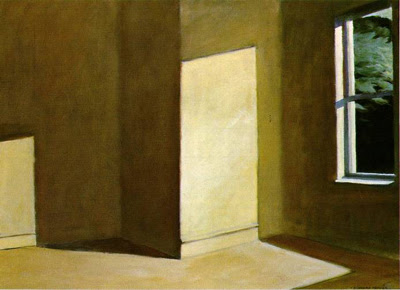Final Words: 10 Lessons from Edward Hopper's Last Painting
My friend Anne McGurk got my attention when she posted Edward Hopper's last painting on her Facebook page yesterday. Titled Two Comedians, from 1966 it has always had a special resonance with me. Enough so that I found myself called back to look at it several times during the day.
Hopper was a legendarily private and remote person so it is ironic that his last picture presents two performers bowing (and saying goodbye) to their audience. Undoubtedly he saw himself and his wife Jo in these two costumed actors. His choice says to me he saw his life making paintings as a long performance, not unlike what happens on the stage. A play, or a painting, done right can reach down deep and stir the soul of the viewer. Yet the painter is not the same as his paintings anymore than the actors remain the characters
they portrayed after the curtain falls. To me Hopper's painting says "I've given my best performance. I hope you've like it."
Every really good painting always teaches us. Here are ten lessons I belive Hopper has given us in this one:
1. There is nothing like the energy of contrasting dark against light.
Hopper's figures and stage front are brilliant under the theater's spotlights. Like a theatrical director, Hopper always spotlighted his key ideas against dramatic darks.
2. The only color that can stand up against a bright yellow in a painting is bright white, hence his choice of costume color. Without the white outfits, the yellow stage falls right out of the painting.
3. Painters always think about rendering pictorial depth. In the back of their minds they envision the space of the world they are painting like theater scenery- as being made up of overlapping stage flats. Hopper tips his hat to that tradition by including the three closely stacked foliage green flats at the right of the stage.
4. Empty spaces aren't empty. Look at the dark blue void surrounding Hopper's two comedians. It's a warmer dark pigment underneath with a second layer of lighter and more blue paint applied over the first. He purposely lets hints of the underpainting show through. Paintings, like any experience in life are layered.
5. Shapes that offer a bit of surprise are everything. I'm willing to bet Hopper first envisioned the front edge of the stage as a straight line but changed his mind and added the subtle curve at the left. It softens the stage and gives it a touch of the organic curves of his human actors.
6. I imagine Hopper saying to himself "Mix your colors like mad. Play with the hues and milk the various intensities." Look at the subtle differences in the yellows on the vertical front of the stage- what at first looked like a single flat yellow shifts to a warmer more gold orange yellow as you come to the painting's very bottom.
7. Massing the forms together into teams. Hopper's two figures are small and yet have to have an emotional impact. He places them together and clothes them in the same color so they work together as one. Had they stood apart from each other they wouldn't have filled the empty stage with such a presence.
8. Hopper's creates unexpected poses for his forms (both human and architectural). Neither figure stands rigidly vertical. The woman gestures to the right with both her arm and a tilt of her head. The man bends slightly forward and to the right while gesturing with his free arm to the left.
9. Squeeze the intervals of empty space. Look at the elegantly elaborate empty dark space contained between the figures. You can tell Hopper loved this little invented space, heightening the contrasts and the crispness of his edges as he rises up and nears the figures' clasped hands.
10. Leave out the inessential so you can concentrate on the real action. While this has to be one of Hopper's most stripped down paintings, it still has a haunting emotional presence. Had its colors, lighting, and composition not been so well conceived it would have felt flat and stale. Hopper was good enough to know when he didn't need bells and whistles.
On a completely other note-
Win this Painting- final chance!
Hagerstown, Maryland's Washington County Museum of Fine Arts Annual Raffle will be held March 6. Philip Koch's Stone City Barns, oil on panel, 10 1/2 x 21" is one of the featured prizes. Raffle tickets are $10. and are available on the Museum's website. You do not have to be present to win.





